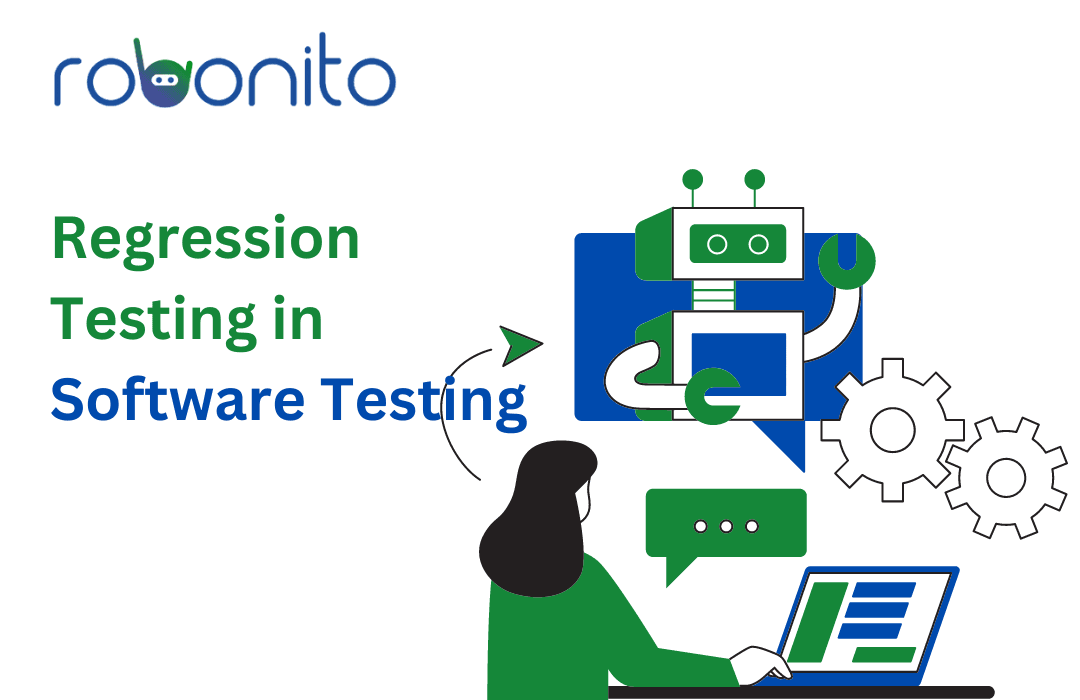In this article, we will explore the concept of Regression Testing in Software Testing and the best practices for conducting effective regression tests. In the dynamic world of software development, where frequent changes and updates are the norm, it is essential to ensure that new modifications do not inadvertently introduce bugs or disrupt existing functionalities. This is where regression testing plays a crucial role.
Understanding Regression Testing in Software Testing
Regression testing is a software testing technique that verifies whether recent changes or updates to an application have introduced any unintended side effects or bugs, thus ensuring that the previously tested functionalities still work as expected. It involves retesting the existing features and functionalities to uncover any regressions caused by new modifications.
Benefits Of Regression Testing
Detecting Regressions: Regression testing helps identify unintended defects or issues that may arise when new code changes are introduced to the software. It ensures that previously working functionalities remain intact after updates or modifications.
Maintaining Software Quality: By verifying that existing features continue to function as expected, regression testing ensures that the overall software quality is preserved throughout the development process.
Preventing Code Conflicts: Regression testing helps in detecting code conflicts and integration issues that may arise when different parts of the software interact with each other.
Improved Bug Detection: As regression testing focuses on retesting specific areas affected by code changes, it increases the chances of identifying any new defects introduced during development.
Enhancing Software Stability: Continuous regression testing provides a safety net against introducing critical bugs, making the software more stable and reliable for end-users.
Reduced Risk of Breakdowns: By catching potential issues early in the development cycle, regression testing reduces the risk of software breakdowns and system failures in production environments.
Saves Time and Resources: Detecting and fixing issues early in the development process saves time and resources that would otherwise be required for extensive bug-fixing and rework later.
Facilitating Agile Development: Regression testing is a crucial part of Agile methodologies, as it allows development teams to make frequent code changes while maintaining software quality and stability.
Boosting Developer Confidence: Knowing that regression tests are in place provides developers with confidence in making changes and enhancements to the software without fear of breaking existing functionalities.
Ensuring Cross-Platform Compatibility: Regression testing helps ensure that code changes do not adversely affect the software's compatibility across different platforms and environments.
Importance of Regression Testing in Software Testing
Regression testing is vital for maintaining software quality and stability throughout the development lifecycle. By performing regression tests, development teams can identify and fix issues that may have been inadvertently introduced while making changes to the software. This helps in avoiding the domino effect, where a single modification can lead to the failure of multiple functionalities, impacting the user experience and eroding customer trust.
Strategies for Regression Testing in Software Testing
Reusable Test Cases
Creating a set of reusable test cases is an efficient way to streamline regression testing. These test cases cover the core functionalities of the software and can be executed repeatedly whenever changes are made. By reusing test cases, time and effort are saved, allowing testers to focus on testing the modified parts more comprehensively.
Prioritization of Test Cases
Due to time constraints, it may not be feasible to execute the entire test suite for each regression test cycle. Therefore, it is essential to prioritize the test cases based on their criticality and the impact of the changes. High-priority test cases should be given precedence to ensure that the most critical functionalities are thoroughly tested.
Automation of Regression Tests
Automation plays a vital role in regression testing, especially when there is a need to execute a large number of test cases repeatedly. Automated regression testing allows for faster execution, reduces the chances of human error, and facilitates frequent testing during the software development process.
Regression Testing Tools
There are several regression testing tools available in the market that aid in the efficient execution of regression tests. Let's explore One popular tool:
Robonito: Empowering Application Software Testing

In the world of software development, ensuring the quality and reliability of applications is of paramount importance. This is where Robonito comes into play. Robonito is an advanced software testing tool designed to streamline and optimize the testing process, allowing development teams to deliver robust and bug-free applications to end users. In this article, we will explore the features and benefits of Robonito and how it revolutionizes application software testing.
Use Us: Robonito No-code automation tool
1. Automated Testing Efficiency: Robonito excels in automating various aspects of the testing process. With its intelligent algorithms and automation capabilities, it reduces the effort and time required for thorough testing. It can automatically execute test cases, simulate user interactions, and generate comprehensive test reports, allowing testers to focus on critical areas of the application.
2. Comprehensive Test Coverage: Robonito ensures comprehensive test coverage by supporting multiple testing techniques. It facilitates functional testing, regression testing, performance testing, and security testing. This wide range of testing capabilities enables developers to identify and address potential issues across different aspects of the application, ensuring its overall quality.
3. Test Case Management: Managing test cases effectively is crucial for successful software testing. Robonito provides a centralized platform for managing test cases, allowing testers to create, organize, and maintain test cases efficiently. It offers features like version control, test case prioritization, and traceability, enabling teams to collaborate seamlessly and ensure consistent testing practices.
4. Test Data Generation: Generating realistic and diverse test data can be challenging. Robonito simplifies this process by offering intelligent test data generation capabilities. It can create meaningful test data sets based on specified parameters, helping testers simulate various scenarios and uncover potential vulnerabilities or edge cases in the application.
5. Continuous Integration and DevOps Integration: Robonito seamlessly integrates with continuous integration (CI) and DevOps processes, enabling automated testing within the development pipeline. It can be easily integrated with popular CI tools, allowing developers to trigger tests automatically during the build process. This integration promotes faster feedback loops, early bug detection, and smoother collaboration between development and testing teams.
6. Performance Analysis and Reporting: Robonito provides in-depth performance analysis and reporting features. It measures application response times, resource utilization, and other performance metrics, helping identify bottlenecks and performance issues. The generated reports offer valuable insights to optimize application performance and ensure a smooth user experience.
7. Flexibility and Customization: Robonito offers flexibility and customization options to meet the specific needs of different projects and applications. It supports scripting languages, integration with various testing frameworks, and the ability to create custom test modules. This adaptability allows teams to tailor the testing process according to their unique requirements.
Challenges in Regression Testing in Software Testing
Regression Testing in Software Testing comes with its own set of challenges. Here are some common hurdles faced by testers:
Test Case Selection
Choosing the right test cases for regression testing can be a daunting task. Testers need to identify the most critical functionalities and select test cases that cover them adequately. The challenge lies in striking the right balance between comprehensive coverage and time efficiency.
Test Environment Setup
Creating and maintaining a reliable test environment is crucial for successful regression testing. Testers need to ensure that the test environment accurately reflects the production environment, including hardware, software, and configurations. Setting up and managing such environments can be time-consuming and resource-intensive.
Test Data Management
Effective management of test data is essential for meaningful regression testing. Testers need to identify and create relevant test data sets that cover various scenarios. Additionally, they must handle data dependencies and ensure data integrity throughout the testing process.
Best Practices for Effective Regression Testing in Software Testing

To maximize the effectiveness of Regression Testing in Software Testing, consider the following best practices:
Test Case Documentation
Maintain comprehensive documentation of test cases, including their purpose, expected results, and any dependencies. Well-documented test cases ensure clarity and facilitate easy test case maintenance and updates.
Version Control
Implement version control for test assets, including test cases, test scripts, and test data. Version control allows teams to track changes, collaborate effectively, and revert to previous versions if needed.
Continuous Integration
Integrate regression testing into the continuous integration (CI) process. By automating regression tests and incorporating them into the CI pipeline, teams can detect issues early, shorten feedback loops, and ensure faster delivery of reliable software.
Risk-Based Testing
Prioritize test cases based on risk analysis. Identify high-risk areas that are more likely to be impacted by changes and allocate more testing efforts accordingly. This approach ensures that critical functionalities are thoroughly tested, reducing the chances of potential regressions.
Conclusion On Regression Testing in Software Testing
Regression testing is a crucial aspect of software testing that ensures the stability and reliability of applications in the face of frequent changes and updates. By following best practices and utilizing appropriate regression testing strategies and tools, development teams can mitigate the risk of regressions and deliver high-quality software to end users.
Revolutionize your software testing with Robonito, the ultimate no-code RPA automation testing tool. Say goodbye to endless testing hours – Robonito slashes testing time by a staggering 98%! Ready to experience the future of software testing? BOOK A FREE DEMO NOW and transform your testing process today!
FAQs On Regression Testing in Software Testing
Q1. What is the difference between regression testing and functional testing?
Regression testing focuses on verifying that existing functionalities still work after modifications, while functional testing aims to validate the behavior and features of an application as per the requirements.
Q2. How often should Regression Testing in Software Testing be performed?
The frequency of regression testing depends on the development cycle and the extent of changes made. It is typically conducted after every major modification or release to ensure the stability of the software.
Q3. Is regression testing in Software Testing performed manually or through automation?
Regression testing can be performed manually or through automation. However, automation is preferred for large and complex applications to save time and effort.
Q4. What happens if Regression Testing in Software Testing is not conducted?
Without regression testing, there is a higher risk of introducing unintended bugs and regressions during software modifications, which can lead to instability, functional failures, and a negative user experience.
Q5. How can I get started with Regression Testing in Software Testing?
**Looking to optimize your QA process? Say goodbye to the time-consuming manual testing and embrace a smarter approach to evaluate your applications. **
Use Our No-code automation tool: Robonito No-code tool for QA testing
With our cutting-edge solution, you can save countless hours while ensuring impeccable performance. Introducing the intuitive Recorder, coupled with robust Assertions, designed to enhance your web app testing and flow testing like never before.
